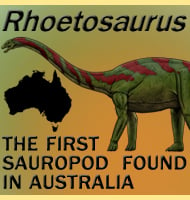Lukousaurus
In Depth Lukousaurus is a little known reptile that is probably a theropod dinosaur, possibly of the Ceratosauria. The overall lack of fossil remains for the genus however makes it very difficult to be certain about exactly what kind of creature Lukousaurus was. Further Reading – Preliminary notes on the Lufeng vertebrate fossils. – Bulletin … Read more
